In the fascinating world of reptiles, snakes have evolved numerous defense mechanisms to evade predators and survive in hostile environments. While most snakes slither forward to escape threats, one remarkable species has developed an extraordinary ability to move in reverse when confronted with danger. This backward-sliding serpent, the Shovel-nosed Snake (Chionactis occipitalis), exhibits one of the most unusual locomotion patterns in the reptile kingdom. This unique defensive behavior has intrigued herpetologists and nature enthusiasts alike, offering insights into the remarkable adaptations that have evolved in these legless reptiles over millions of years of evolution.
The Shovel-nosed Snake: Master of Backward Motion
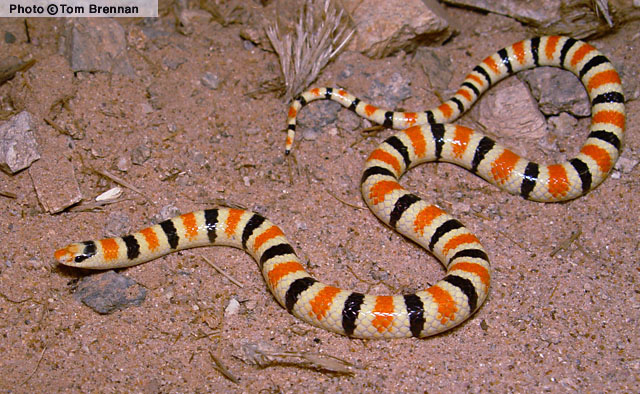
The Shovel-nosed Snake, native to the southwestern United States and northwestern Mexico, is the primary species known for its remarkable backward-sliding ability. This small, non-venomous colubrid typically grows to lengths of 10-16 inches and features a distinctive shovel-shaped snout that gives it its common name. When threatened, this desert-dwelling reptile can rapidly reverse direction without turning its body, sliding backward through loose sand with surprising speed and efficiency. This peculiar locomotion isn’t just a random panic response but a carefully evolved strategy that allows the snake to retreat while still keeping its eyes on potential threats, providing a significant survival advantage in its harsh desert habitat.
The Mechanics Behind Backward Movement
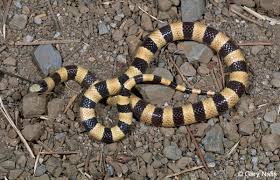
The backward movement of the Shovel-nosed Snake relies on specialized muscular adaptations and a unique locomotion technique. Unlike the typical serpentine motion used by most snakes, the Shovel-nosed Snake employs a modified form of rectilinear locomotion when moving in reverse. This involves complex coordinated contractions of specialized ventral muscles that essentially pull the body backward in a straight line. The snake’s scales are oriented in a way that reduces friction when moving backward through sand, while the shovel-shaped snout acts almost like a rudder, helping to maintain direction during this unusual retreat. Remarkably, these snakes can sustain this backward movement at speeds comparable to their forward motion, demonstrating the effectiveness of this evolutionary adaptation.
Evolutionary Advantages of Reversing Direction
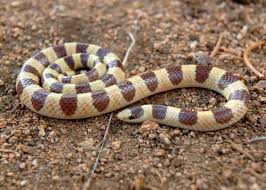
The ability to slide backward offers several significant evolutionary advantages that have helped the Shovel-nosed Snake thrive in its challenging desert environment. Most importantly, this backward motion allows the snake to retreat from threats while maintaining visual contact with predators, something that would be impossible if it had to turn around first. The sandy desert substrate is particularly conducive to this form of movement, as the fine particles allow for smooth backward sliding with minimal resistance. Additionally, this unusual locomotion often confuses predators that are accustomed to prey animals fleeing in a forward direction, providing precious seconds for escape. Over generations, natural selection has refined this behavior into an effective defensive strategy that’s unique among reptiles.
Habitat and Distribution
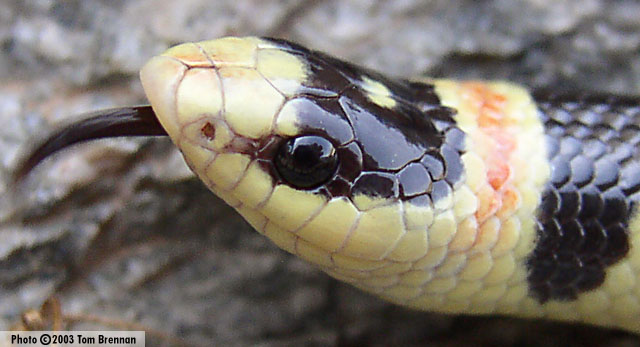
The Shovel-nosed Snake primarily inhabits the arid desert regions of the American Southwest and northwestern Mexico, including the Sonoran and Mojave deserts. These areas are characterized by sandy soils, sparse vegetation, and extreme temperature fluctuations—conditions that have shaped the snake’s unique adaptations. The species shows a particular preference for areas with loose, sandy substrates that facilitate both its burrowing behavior and its signature backward locomotion. Their range extends across parts of California, Arizona, Nevada, and into Mexico’s Baja California and Sonora regions. Within these desert ecosystems, they’ve carved out a specialized niche that few other reptiles can exploit, demonstrating the remarkable specificity of their environmental adaptations.
Triggers for Backward Movement

The backward-sliding behavior of the Shovel-nosed Snake is primarily triggered by perceived threats and dangerous situations. When the snake encounters a potential predator such as roadrunners, kit foxes, or other desert carnivores, it may initially freeze before initiating its unusual reverse locomotion. Interestingly, researchers have observed that the intensity and proximity of the threat directly correlate with the speed and duration of the backward movement. Laboratory studies have shown that even specific sounds or shadows passing overhead can trigger this defensive response, indicating a highly developed threat-recognition system. The behavior appears to be instinctual rather than learned, as even captive-bred juveniles with no exposure to predators will exhibit the same backward-sliding response when threatened.
Physical Adaptations Supporting Backward Movement
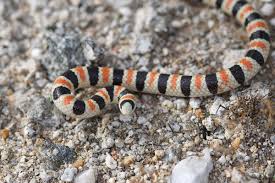
Several physical adaptations make the Shovel-nosed Snake’s backward locomotion possible and efficient. The snake’s ventral scales are specially modified with a slightly different angle and texture compared to those of other snake species, reducing friction when moving in reverse through sandy substrates. Their namesake shovel-shaped snout isn’t just for burrowing—it also helps maintain balance and direction during backward motion, acting almost like a stabilizer. The snake’s muscular system features enhanced development of certain muscle groups responsible for the pulling motion required for backward movement. Additionally, their vertebral column has subtle modifications that provide greater flexibility for reversing direction without the need to reorient the entire body, a remarkable example of how form follows function in evolutionary adaptations.
Other Snakes with Similar Abilities
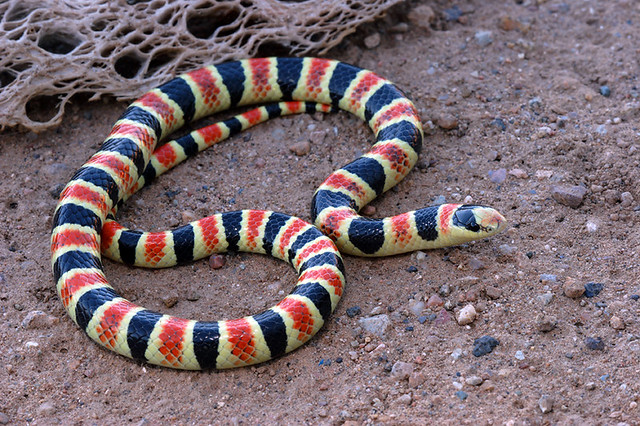
While the Shovel-nosed Snake is the most renowned for its backward-sliding prowess, several other snake species demonstrate limited versions of this ability. Members of the Sonoran Shovel-nosed Snake complex (genus Chionactis) share this adaptation to varying degrees, with some showing more developed backward movement than others. The Western Shovel-nosed Snake (Chionactis occipitalis) exhibits this behavior most prominently, while the related Mexican Shovel-nosed Snake (Chionactis palarostris) shows a less developed version of the same technique. Some members of the sand snake family (Psammophis) from Africa and Asia have also been observed performing limited backward movements when threatened, though their technique differs somewhat from the North American shovel-nosed snakes. These variations across species demonstrate how similar environmental pressures can lead to comparable adaptations in distantly related organisms.
Scientific Research and Observations
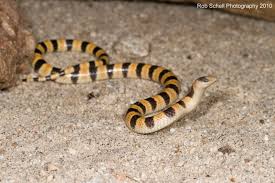
The backward locomotion of the Shovel-nosed Snake has been the subject of several focused scientific studies since the behavior was first formally documented in the 1930s. Herpetologists have employed high-speed photography and motion analysis to deconstruct the precise muscular movements involved in this unique form of locomotion. More recent research has utilized electromyography to record the electrical activity in the snake’s muscles during backward movement, revealing the complex neural coordination required for this behavior. Field studies have documented the frequency and circumstances of backward movement in natural settings, finding that this behavior occurs in approximately 65% of predator encounters. Laboratory experiments have further explored the sensory triggers and physiological limits of this adaptation, helping scientists understand both how and why this extraordinary behavior evolved.
Conservation Status and Threats
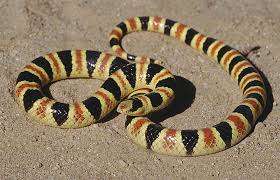
The Shovel-nosed Snake currently holds a “Least Concern” conservation status according to the IUCN Red List, though certain populations face localized threats. Habitat destruction from urban development, agriculture, and solar energy installations in desert regions poses the most significant threat to these specialized reptiles. Road mortality is another substantial concern, as these small snakes are frequently killed by vehicles while crossing desert highways, particularly at night when they’re most active. Climate change presents a growing threat, as increasing temperatures and changing precipitation patterns may alter the delicate desert ecosystems these snakes depend on. Additionally, collection for the exotic pet trade, though regulated, continues to impact wild populations in certain areas, requiring ongoing monitoring and conservation efforts.
Behavioral Studies and Observations

Field observations of the Shovel-nosed Snake have revealed fascinating details about when and how they employ their backward-sliding ability. These snakes are primarily nocturnal, emerging from their underground refuges after dark to hunt and move about the desert surface. When disturbed by researchers or natural predators during these nighttime activities, they typically respond with a sequence of defensive behaviors that escalates if the threat persists. Initially, the snake may freeze in place, relying on its cryptic coloration for camouflage against the desert sand. If the threat continues, the snake will often perform a short, jerky forward movement before abruptly switching to its signature backward slide, sometimes maintaining this reverse locomotion for distances of up to several meters. Interestingly, captive individuals maintain this behavior even after years in captivity, suggesting the deeply ingrained nature of this defensive response.
Ecological Role and Importance
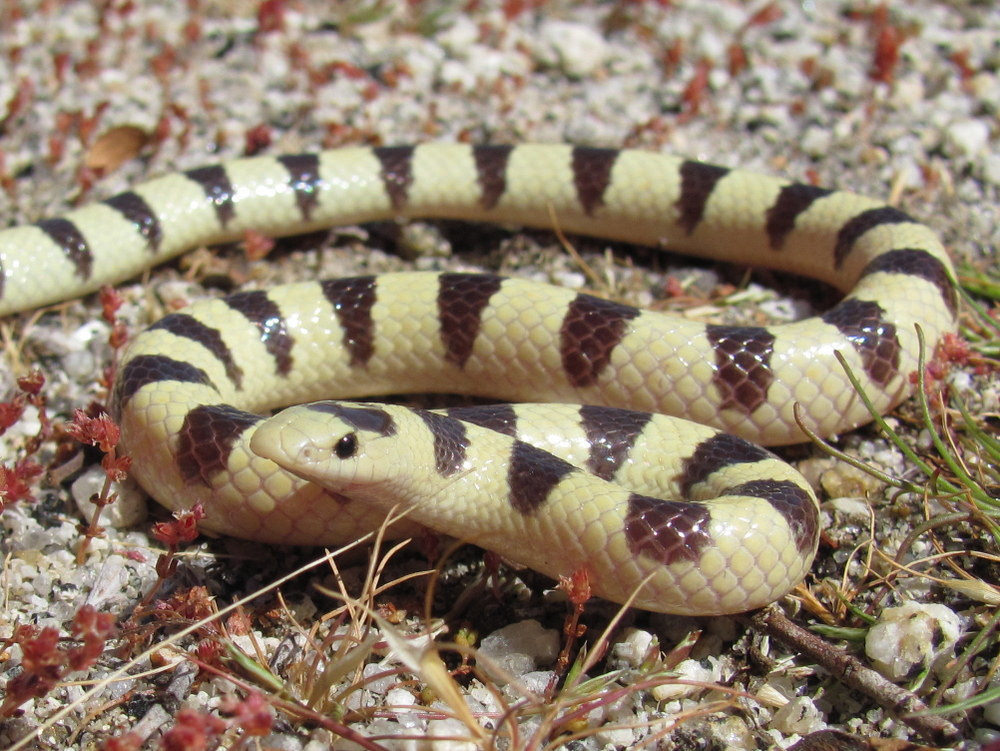
The Shovel-nosed Snake plays a crucial role in desert ecosystems as both predator and prey, forming an important link in the desert food web. These snakes primarily feed on small invertebrates, including scorpions, spiders, centipedes, and various insect species, helping to control populations of these arthropods. Their burrowing activities contribute to soil aeration and turnover, which benefits desert plant communities by improving soil structure and nutrient distribution. As prey, these snakes provide an important food source for larger desert predators, including owls, roadrunners, and various mammalian carnivores. Their specialized niche as sand-swimming, backward-moving serpents represents a unique evolutionary pathway that adds to the biodiversity and ecological complexity of desert environments, demonstrating nature’s remarkable ability to develop specialized solutions to environmental challenges.
Cultural Significance and Human Interactions

The Shovel-nosed Snake has occupied a notable place in the cultural traditions of indigenous peoples of the American Southwest for centuries. Several Native American tribes, including the Tohono O’odham and various Pueblo groups, feature these unusual serpents in their traditional stories, often associating their backward movement with themes of evasion and trickery. Early European settlers and explorers of the region frequently mentioned these unusual snakes in their accounts, though many initially dismissed reports of backward-moving serpents as folklore or exaggeration. Today, these fascinating reptiles are popular subjects for desert wildlife tours and educational programs throughout the Southwest, helping to inspire interest in desert conservation. Unlike many other snake species, Shovel-nosed Snakes generally inspire more curiosity than fear among humans, partly due to their small size, non-venomous nature, and their remarkable locomotive abilities.
## Conclusion
The Shovel-nosed Snake’s ability to slide backward represents one of nature’s most ingenious solutions to the challenge of predator evasion. This remarkable adaptation—combining specialized physical features, unique muscular coordination, and instinctual behaviors—demonstrates the extraordinary diversity of survival strategies that have evolved in the animal kingdom. As climate change and habitat destruction increasingly threaten desert ecosystems, understanding and preserving unusual adaptations like the backward locomotion of the Shovel-nosed Snake becomes ever more important. These specialized reptiles serve as living examples of evolutionary innovation and remind us that nature’s solutions to survival challenges often take unexpected and fascinating forms. By continuing to study and protect these remarkable creatures, we gain not only scientific knowledge but also a deeper appreciation for the wonders of adaptation in the natural world.




